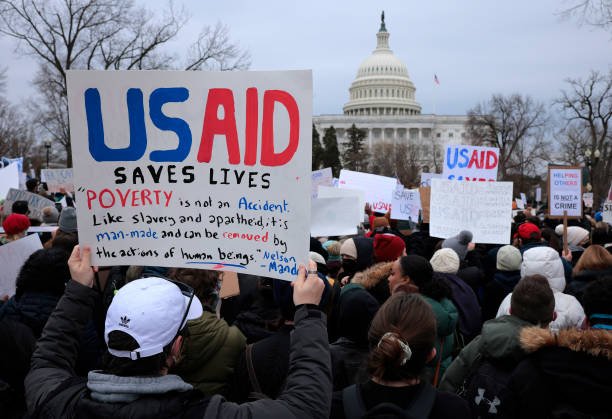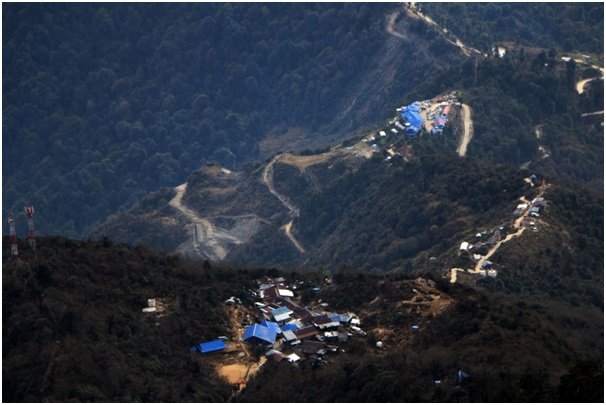Grassroots, Party Politics and Reality: A Living Insight

Grassroots means involving ordinary people in society or an organization. Once Chanakya said that power comes from the countryside. The unequal power relations in society create a situation of domination and subordination in society. Nepali society doubtlessly suffers from caste, gender, class, and regional disparities right from the beginning. However, the constitution and the laws negate all sorts of discrimination aforesaid. As the reigning ideologies of the caste system and inequalities have been governing the sociocultural and political processes of society for generations, the powered sections of society dominate the underpowered sections of society. While emphasizing grassroots politics, Kevan M. Yenerall (2017) mentions that grassroots movements and organizations use collective action from the local level to affect change at the local, regional, national and international levels. Grassroots movements are associated with bottom-up, rather than top-down decision-making, and are sometimes considered more natural than more traditional power structures.
Party politics is supposed to be the political activities and decisions to support a particular political party. Party politics plays a large role in determining who will be chosen for the position. Anson D. Morse(1996) contends that a political party is a durable organization united by common principles which have for its immediate end the advancement of the interests and the realization of the ideals …of the particular group or group which it represents. The article presents insights based on a ward-level discussion of workers and local leaders of the Community Party of Nepal (Maoist Center) at Birendranagar Municipality-8 of Surkhet in Karnali Province held on 1 April 2023 under the grassroots campaign.
The base of the party has been shrunk at the grassroots. Only more workers and cadres are seen in the upper committees. Different roles and positions have been assigned to hundreds of cadres and workers who have been found dysfunctional to mobilize the people at different levels. The diverse leaders confine themselves to a mere assumption of roles and responsibilities at different committees rather than to perform following a party line to bring changes to the lives of people of different walks. In science, the act of only standing by shouldering a certain weight of an object without passing a certain distance is not supposed to work. The work is scientifically accompanied by the multiplication of force and distance. Likewise, the political roles and responsibilities must be geared up on the performance of diverse groups and people based on their sufferings. The dedication of leadership is largely responsible for the present-day influence of America, China and India in regional and international politics. Furthermore, the sense of sacrifice of Maoist leaders and workers during the war made the people of diverse caste and ethnic groups critically aware of their rights.
Following the spirit of the federal system of governance, the party committees have been delineated accordingly. An essence of a federal system of governance is that there is coordination and harmonization between the centripetal and centrifugal forces regardless of their core values and functions. Contrary to the values, the grassroots committees are being vanished from the role performance point of view. The upper committees do not focus on deliberations and discussions on the issues and problems of marginalized sections of society. Meetings are ritually organized and the substantive and procedural values of the meetings are well-captured by a swarm of new elites. The quite interesting matter is that even the leaders and workers hailed from the marginalized sections do not advocate for their group rights. They seem to have been intermingled into an undesirable situation.
Maoist Center is always in the governments excluding a few exceptions. The plans related to the infrastructure and social development of local communities are not selected and prioritized by the local communities themselves. The above-mentioned plans are prioritized by a coterie close to the elected officials and the party leaders. An irony always remains that the concerns of the needy and marginalized people are directly and indirectly ignored. The participants in the meeting revealed that the tendency to seek individual commission and benefits alienates the local concerns about developments.
There are seventy-four party members in the ward. The ward committee is deprived of the necessary political backstopping and orientation on the issues of transformation and good governance. Had the ward committee equipped with mobility and movement, the partial distribution of the aid program to the poorest of the poor households on the selection of ward government would have been checked. Fifty households throughout the ward had access to the aid at the rate of twenty-one thousand and five hundred rupees per head. Only the own voters were privileged and the households living in dire –poverty at Mildanda were ignored by the prejudice of different ideologies. Before the distribution of aid, the ward people were alienated from the right to information.
The ward is aggravated by the issues of landlessness, poverty, unemployment, and underdevelopment and deprivation of education of children of landless households over the decades. Community Party of Nepal (Unified Marxist-Leninist) has been ruling over a ward since 2054 B.S. by having votes from the landless and poor households since then. Notwithstanding the situation, the ward governments have not addressed the needs and plights of the landless and poor people. Only the weaker section of society has been bullied. Policy advocacy has been weakened in society as civil society organizations are dominated by the affluent sections of society. The powered section of society has been taking benefits of developmental projects and opportunities.
Nepal has been embarking on the road to a new political change. Federalism, secularism, inclusion, and republicanism have become an integral part of our polity. Both the people's war and peaceful movements are deciding factors of the political change in the country. The seen and unseen conspiracies are around the corner to reverse the existing political system, however, they will be remaining in the daydreaming only. The core reality is that the existing political system and the conditions of the people are contradicting one another. The polity should be responsible to address the gaps subsisting between the system and the conditions through changes in the rigid laws and the tendency of decentralization.
In 1907, Ed Perry, the vice-chairman of the Oklahoma Republican Campaign Committee, stated of his platform, “I am for a square deal, grass root representation, for keeping close to the people, against ring rule, and for fair treatment.” The term “ring rule” refers to comparatively small groups of persons, usually headed by a political boss, organized to control a city, county, or state to derive large personal monetary profit from that control.
The Civil Rights Movement of the 1950s and 1960s stands as a prominent example of grassroots movements in the United States. An early instance of grassroots politics in the Civil Rights Movement was the 1951 case of educator William Van Til while working for the integration of the Nashville, Tennessee public school system. Van Til worked to create a grassroots movement focused on discussing race relations at the local level. To that end, he founded the Nashville Community Relations Conference, which brought together leaders from various communities in Nashville to discuss the possibility of integration. In response to his attempts to network with leaders in the Black community, white residents of Nashville responded with violence and scare tactics. Despite these and other formidable obstacles, Van Til succeeded in bringing Blacks and Whites together to discuss the potential for changing race relations and was ultimately instrumental in integrating the Peabody College of Education in Nashville. The desegregation plan proposed by Van Til's Conference was implemented by Nashville public schools in 1957. This movement is characterized as grassroots because it focused on changing hearts and minds at the local level using local influence. As grassroots organizers are today, Van Til ultimately succeeded by working with community organizations to foster useful political dialogue.
The byzantine complexity of our political system is that political change is yet to be institutionalized in all spheres of society. The leaders at different levels in different capacities have been changed but the undesirable condition of the people is as it is. The middle layered committees of the party have not linked with the problems and issues of the grassroots. A few leaders as the intermediaries report to the center and the local issues are not internalized. The party committees should not be a buffer ahead of the grassroots. Lokendra Rana 'Prasanta', a chair of the Non-territorial Karnali Province committee of the Party, as well as the representative to the gathering, said, "The party should be vibrated and active to lead a task of social and political mobilization to fetch changes in the lives of marginalized communities. Our party has a historical liability to complement the remaining issues of the changes. The concerns raised in the meeting are writings on the wall and the grassroots movements and campaigns need the time to change society on the waking up of the committees. The previous lethargy in the committee system will be ended and lobbying and advocacy with the top leadership will be carried out to make the party committees viable and energetic."






Leave Comment